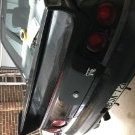Motec M800 Vs Vipec V88 - Real Info Needed
Announcements
-
Latest Posts
-
Hi all, Restoring r33 series 1 rb25det. All the heater hoses were on their way out, have replaced them and put it all back together. After testing I noticed a small leak from behind the head on the actual metal water line to the turbo when cars warm. I tried running a longer hose over it but it kept leaking... I am about to take the (stock) manifold off again😔 to change the water line does any one have any lines they recommend? I was looking at Aeroflow Turbo Oil & Water Line Set but not sure what everyone else recommends. Car is completely stock but want to upgrade turbo eventually. it looks like ill have to disconnect a lot just to replace these lines so if there's anything else recommended to do please let me know. Thank you in advance!
-
From memory, on the R33 GTSt at least, while everyone says "It's not adjustable", I found when I changed clutches in mine, it just needed a small adjustment on the rod length. But be very wary here, as you could end up trying to push the pushrod in the master too far, or blowing out the slave. Most likely though, if the master/slave isn't bypassing internally or leaking out, then the throw out is the wrong height compared to the fingers on the clutch, so when it moves to disengage the clutch, it isn't 100% disengaged. You can check part of this out too by jacking the car up, having the engine running, put your foot on the clutch and try to engage 1st gear. If it goes in pretty easy (Compared to the ground) and/or the wheels start turning a fair bit and it takes a bit too much brake pedal to bring them back to a stop, this is likely the issue. I'm not sure if you can adjust the height of the forks etc in these though, it's been that long since I've touched any RB gearbox.
-
That's all good, I thought I was missing some interesting feature! Maybe @PranK can double check if that is something that is meant to be operating or not.
-
I hope that is not something that bad. From what i remember he said that only first gear is "hard" to get in and that he has couple of ideas what to try next but idk 😕 hope it is not gearbox out. I will let you know.
-
If it's not the hydraulics, it is probably gearbox back out. Usually as per @Duncan's post, or otherwise associated with not getting the throwout fork positioned correctly. All the way up to catastrophically bolting shit back together without it being aligned properly and wrecking the clutch/input shaft/flywheel/something else.
-



Recommended Posts
Create an account or sign in to comment
You need to be a member in order to leave a comment
Create an account
Sign up for a new account in our community. It's easy!
Register a new accountSign in
Already have an account? Sign in here.
Sign In Now